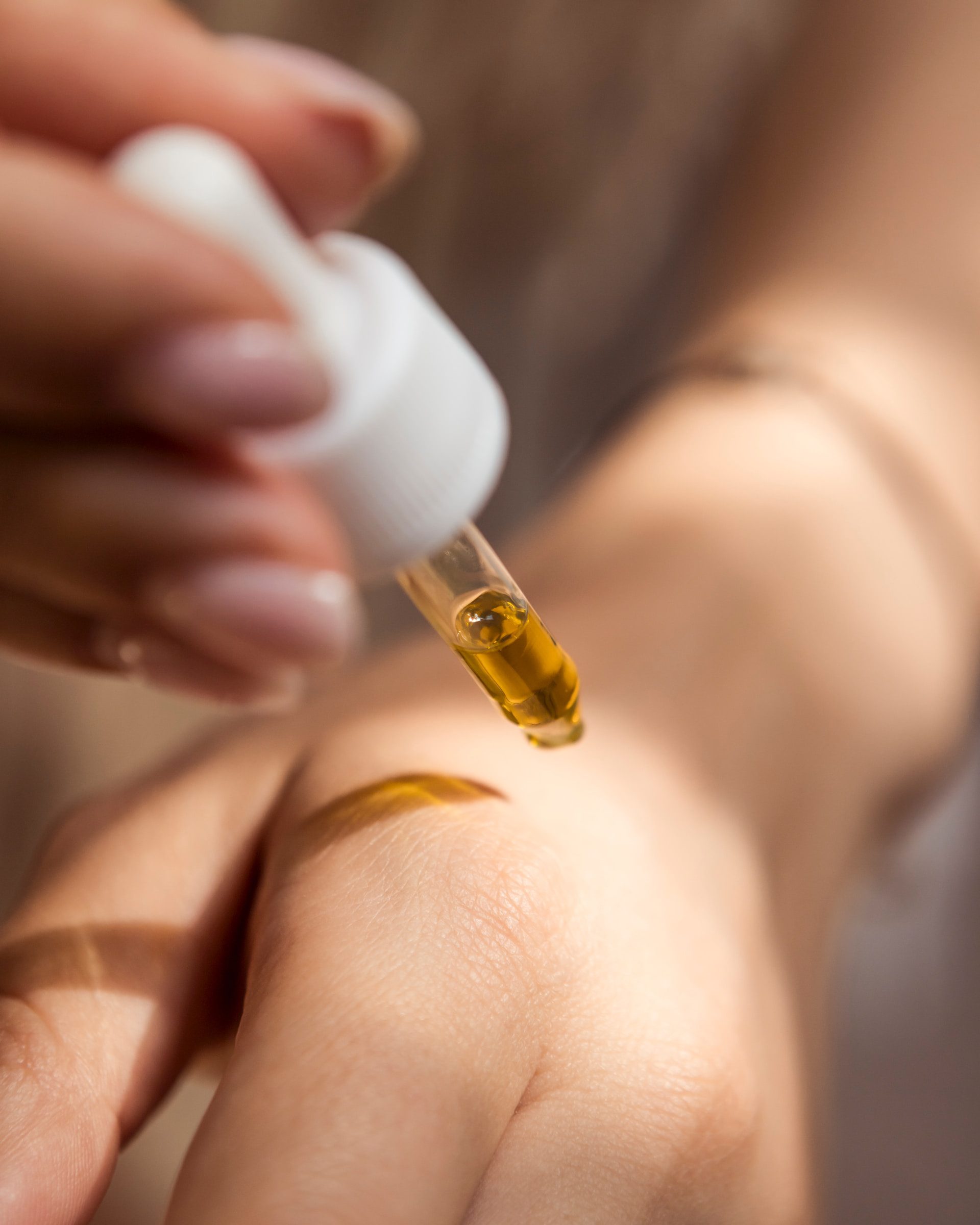11/20/2023 | pH | 9 MINUTE READ
The Significance of Skin pH in Cosmetics Manufacturing

The delicate balance of the skin’s pH, ranging between 4.7 and 5.75, is a fundamental aspect of overall skin health. Understanding the potential of pH and hydrogen ions in a water-based solution is crucial in cosmetics manufacturing. The pH scale, logarithmic in nature, dictates whether a substance is acidic, neutral, or alkaline. Skincare products are pivotal in maintaining this balance, influencing the skin’s resilience and susceptibility to various issues. As we delve into the significance of skin pH in cosmetics manufacturing, we explore its impact on skin health, the measurement techniques employed in the industry, and the regulatory considerations that guide product development.
Understanding pH: A Deep Dive
The term “pH” may stand for “potential of hydrogen,” but its influence on skincare products and skin health is far-reaching. The numeric scale, ranging from 0 to 14, helps categorize substances based on their acidity or alkalinity. Skin’s natural pH, averaging 4.7, is a protective barrier, preventing water loss and maintaining a balanced microbiome. As we explore the depth of pH and its effects on the skin, we unravel the intricacies of the acid mantle—a protective film comprised of ceramides, cholesterol, enzymes, sweat, and skin oil.
Disruptions in the skin’s pH, caused by external factors or inappropriate skincare products, can lead to various skin issues. A compromised pH can result in sensitivity, dryness, and a weakened barrier function. The logarithmic nature of the pH scale emphasizes that even small changes represent significant alterations.
Skincare products are designed to complement the skin’s natural pH, with various categories falling within specific pH ranges. Cleansers, toners, sunscreens, exfoliants, moisturizers, serums, vitamin C, and retinol products have a designated pH range to ensure their effectiveness and safety. The concept of pH balance in skincare products is explained, highlighting its importance in formulating products that align with the skin’s natural pH. This knowledge empowers consumers to make informed choices about their skincare routine.

pH Measurement Techniques in Cosmetics Manufacturing
The measurement of pH in cosmetics manufacturing has evolved. Traditional methods, such as litmus paper and color indicators, provided a basic understanding of acidity or alkalinity. However, these methods needed more precision. Modern manufacturing employs advanced instrumentation, allowing for accurate and reliable pH measurements. These sophisticated tools, including digital pH meters and ion-selective electrodes, have become industry standards, ensuring that skincare products maintain the desired pH levels during production.
Regulatory bodies are crucial in establishing industry standards for pH levels in skincare products. Compliance with these standards is essential to ensure product safety and efficacy. It’s important to adhere to regulatory guidelines, emphasizing the need for certifications to demonstrate a product’s compliance with established pH requirements. Understanding and meeting these regulatory considerations contribute to product quality and instill consumer confidence in the safety and effectiveness of skincare formulations.
Consumer Education on pH in Skincare
Consumers are often faced with deciphering product labels to make informed skincare choices. A deeper understanding empowers individuals to choose products that align with their skin’s pH, contributing to healthier and more resilient skin. Educating consumers on selecting pH-balanced skincare products is crucial. By incorporating pH-conscious choices into their skincare routines, consumers can proactively contribute to the well-being of their skin.
Misconceptions about pH in Skincare abound. By clarifying misunderstandings, individuals can confidently navigate the skincare landscape, making choices based on sound knowledge rather than unfounded concerns. Here are some common misconceptions about pH in skincare:
1. There is a perfect pH for skincare products.
The ideal pH range for skin is between 4.5 and 5.5, which is slightly acidic. However, this does not mean that every skincare product must have a pH of exactly 5.0 to be effective. The skin has a remarkable ability to buffer itself and maintain its natural pH balance. Even if you use a product with a slightly different pH, your skin will quickly adjust.
2. The pH of a product determines how mild or harsh it is.
The pH of a product is not the sole determinant of its gentleness or harshness. Many other factors can influence a product’s irritation potential, such as the type of ingredients it contains, the concentration of those ingredients, and the overall formulation.
3. You should avoid using alkaline skincare products.
While it is true that the skin’s natural pH is acidic, this does not mean that alkaline products are inherently harmful. In fact, some alkaline products, such as soaps and cleansers, can be effective at removing dirt, oil, and makeup without disrupting the skin’s pH balance.
4. You should wait after washing your face before applying skincare products.
The idea that you need to wait for your skin’s pH to return to normal after washing is a myth. In fact, it is actually beneficial to apply skincare products to damp skin, as this helps them to absorb better.
5. You can use sparkling water to rinse your face.
Sparkling water has a pH of around 5, which is close to the skin’s natural pH. However, the carbonation in sparkling water can be irritating to the skin, so it is best to stick to plain water.
6. Honey and milk are good for your skin because they are acidic.
While honey and milk do have a slightly acidic pH, they are not necessarily beneficial for the skin. Honey can be sticky and clog pores, while milk can trigger allergies or cause breakouts in some people.
7. You can test the pH of your skin with pH strips.
pH strips are not accurate for measuring skin pH, as the skin’s pH is constantly fluctuating. In addition, pH strips can be irritating to sensitive skin.
8. You should use a different cleanser for your face and body.
The pH of your face and body is actually very similar, so you can use the same cleanser for both. However, if you have sensitive skin, you may want to use a more gentle cleanser for your face.
9. You should avoid using products with fragrance.
Fragrance can be irritating to some people, but it is not inherently harmful. If you have sensitive skin, you may want to avoid products with fragrance or choose fragrance-free products that are specifically formulated for sensitive skin.
10. You can use lemon juice to lighten your skin.
Lemon juice is very acidic and can irritate the skin. It can also cause hyperpigmentation, which is the darkening of the skin.
By debunking these misconceptions, individuals can make informed decisions about their skincare routine and choose products that are best suited for their skin type and concerns.

Acknowledging pH Variability in Skincare Products:
Despite efforts to maintain pH balance, skincare formulations may face challenges during production. Factors such as ingredient interactions, stability concerns, and compatibility issues can influence the final pH of a product. From selecting suitable ingredients to leveraging advanced formulation techniques, the industry continually adapts to ensure the delivery of effective and skin-friendly products.
Promoting consumer education extends beyond understanding product labels. This paragraph encourages individuals to incorporate pH education into their daily skincare routines. By becoming more aware of their skin’s pH needs and the impact of various products, consumers can make intentional choices that align with their skin goals. This proactive approach fosters a deeper connection between consumers and their skincare regimens, ultimately contributing to healthier and more radiant skin.
The skin’s pH is not static; numerous factors, including diet, environment, and individual health, can influence it. Understanding this variability encourages consumers to adopt a holistic approach to Skincare, considering lifestyle factors alongside product choices. Embracing the dynamic nature of skin pH allows for personalized skincare routines that cater to individual needs and contribute to overall skin well-being.
Embracing pH Diversity in Cosmetic Products:
While maintaining an optimal pH is crucial, this paragraph acknowledges the diversity of skin types and their unique pH requirements. Cosmetic manufacturers increasingly recognize the importance of offering pH-diverse products to cater to a wide range of skin needs. From pH-balanced formulations for sensitive skin to targeted acidic products for specific concerns, this approach ensures inclusivity and accessibility in the skincare market.
The impact of pH in cosmetics extends beyond individual preferences; regional and cultural factors also influence it. Different climates, water qualities, and cultural skincare practices can affect how products interact with the skin. Recognizing and respecting these variations contribute to the globalization of Skincare, fostering a more inclusive and culturally sensitive beauty industry.
As sustainability becomes a focal point in the beauty industry, this paragraph discusses the environmental considerations associated with pH-conscious formulations. From sourcing raw materials to the biodegradability of products, cosmetic manufacturers are increasingly mindful of the ecological impact of their formulations. Embracing pH diversity goes hand in hand with a commitment to environmentally friendly practices, ensuring that skincare products contribute positively to personal and planetary health.

While maintaining a suitable pH is crucial, it is part of a broader commitment to skin health. This holistic perspective encourages consumers and the industry to prioritize overall well-being, considering factors such as hydration, sun protection, and lifestyle choices in conjunction with pH-conscious practices.
The dynamic nature of skincare trends and innovations means that the landscape of pH-conscious products is continually evolving. The conclusion reflects on the exciting potential for future advancements in pH-related skincare technologies. By staying attuned to emerging trends and embracing ongoing research, the beauty industry can ensure that pH remains a cornerstone of effective and progressive Skincare.
With knowledge about the significance of pH, the impact of various products, and an awareness of personal skin needs, consumers can make choices that align with their unique beauty goals. As the skincare industry evolves, this empowerment fosters a symbiotic relationship between consumers and the cosmetic sector, working together to achieve optimal skin health and beauty.
Posted by Joshua Samp on November 20, 2023
Sensorex is a global leader in the design and manufacture of quality sensors for water quality and process applications. The company offers more than 2000 sensor packages for pH, ORP, conductivity, dissolved oxygen, free chlorine, chlorine dioxide, UV transmittance and other specialty measurements, as well as a full line of sensor accessories and transmitters. Its expert technical support engineers solve analytical sensor challenges with custom designs and off the shelf products.




